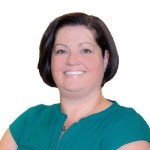
Most educators are accustomed to pausing and reflecting on what they’re doing. Similarly, our youngest students ask many more questions over the course of a day than do their high school counterparts. At times, the questions might seem endless. Why does the sun hurt my eyes? Why do we learn math? What will happen if I put these wooden blocks in water? You’ve probably noticed, however, that this innate curiosity often tapers off as children grow older.
Curiosity is contagious. If I want others to be curious, I must, myself, demonstrate curiosity. I read widely and often engage in conversations with people from diverse backgrounds to gain insight into their beliefs about our world. Since my recent move from Australia to the U.S., I’ve connected with people—both inside and outside of education—to learn more about a concept, policy, or even the purpose of an activity or task that was foreign to me. These conversations have been incredibly enlightening, but they’ve also further highlighted for me how important being curious is to learning and improvement, no matter where you are on your path of lifelong learning. Our roles as educators and school leaders require us to continually nurture student curiosity, and also to revive teacher curiosity about their own everyday work.
As a classroom teacher, I encouraged students to ask questions related to our topic, using their musings as a springboard for our learning. Student curiosity was a catalyst for learning engagement. When I became an assistant principal, I continued this practice and encouraged teachers to ask questions and search for answers. Why were we using a certain program or textbook? What does this data actually tell us? What is that team doing that produces such great classroom engagement? After a short time, our teachers began to ask deeper questions, specifically about student learning and growth. Their initial curiosity led them to more closely examine the academic performance of students in grade levels, cohorts, and as individuals, and they wanted to know what teaching practices led to the best outcomes for students.
Together, we reviewed our existing professional learning community structure to establish three professional learning teams, each with its own focus. These teams met 8–10 times per school year to discuss and analyze a range of data collected from across the school, using the teachers’ questions to focus on student achievement in literacy and numeracy and to investigate the effectiveness of our school-based supports for student well-being and engagement. Membership on the teams was strategically engineered by our teachers to ensure that each grade level was represented and that each team included at least one specialist teacher. Reflecting on our data, the teams highlighted practices that they believed led to positive results. With guidance, they read and compared research on the practices that showed evidence of improving student outcomes. At the end of the school year, the teams referred to their research and findings to recommend future teacher practices and whole school goals for the next school year, engaging teachers in a process of continuous improvement to affect student learning.
Our schoolwide peer observation program also sprang from teacher curiosity. It began with ongoing classroom walkthroughs and observations conducted by our school principal, our two lead teachers, and me. Periodically, at our whole staff briefing, we shared our observations, highlighting bright spots that illustrated how high quality teacher practices demonstrably influenced student achievement. Our teachers became increasingly curious about what their fellow teachers were doing that resulted in positive growth for their students. Most of our staff asked if they, too, could participate in classroom observations to learn from their colleagues. We prioritized funding to develop a whole-school program for peer observations, focusing on building the capacities of every teacher using a research-based method for observation and feedback. Over time, we observed high quality practices becoming shared practices, reducing variability, and increasing student achievement levels across the school.
By embracing our teacher’s professional curiosity about effective practice, we created sustainable structures and processes that allowed teachers to work more collaboratively. By providing opportunities for teachers to increase their individual and collective efficacy through an extended course of collaboration, observation, and feedback, we fed their innate drive to learn and improve. Each activity served our shared purpose to ensure every child experienced success, and reinforced our shared belief that every child, with the right support, could learn.
What are your teachers curious about that might improve student performance at your school?
McREL helps schools and districts develop curiosity-based professional learning experiences for teachers. Learn more about McREL’s Curiosity and Powerful Learning and contact us to get started today.


How can a provocative article such as this not have at least one comment? The last question ought be be spurring a continuing conversation. Teachers and school leaders lacking curiosity are unlikely to engage student curiosity.